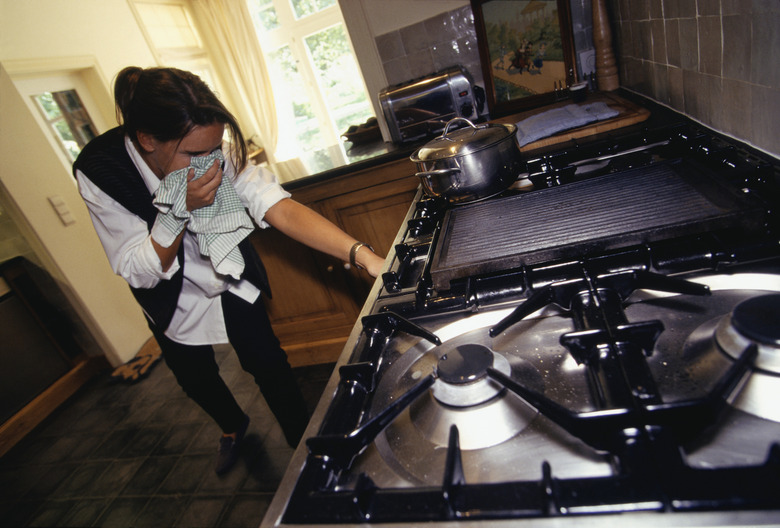How To Detect Methane Gas
Methane is part of nearly everyone's daily life as it makes up 87 percent of the natural gas we use to cook and heat our homes. Huge deposits of methane are stored in the permafrost at the poles, as well as deep in wetlands where anaerobic bacteria produce it as a by-product of methanogenesis, or respiration. In its naturally occurring state, it is odorless, colorless, tasteless and nontoxic, though it is an asphyxiant because it displaces oxygen in a closed space. Methane is highly reactive with oxygen, making it a valuable fuel but also an explosive danger if not properly detected and controlled.
Step 1
Follow your nose. Methane gas for commercial use is combined with an odorant to help detect leaks. Any natural gas used in the home is tainted with methanethiol, which gives it that characteristic rotten-egg smell.
Step 2
Keep an eye on the canary. In much of the 20th century, coal miners kept a canary in the mine as the little birds are highly susceptible to methane toxicity in even low concentrations. A struggling or dead canary immediately alerted the minors to rising levels of methane in the air. Today, there are essentially mechanical canaries. Fixed gas detectors are mounted in the home or workplace in much the same way as smoke detectors, and they provide reliable detection and notification of methane leaks. Methane is lighter than air, so fixed detectors should be mounted near the ceiling to be effective.
Step 3
Trap methane in a plastic bottle if you suspect that your well water is contaminated. Naturally occurring methane often penetrates natural wells used for drinking water. Methane escapes from water quickly, so hold a bottle upside down over the reservoir, then fill the bottle with water and seal it. Remove the cap and immediately hold a match above the opening. If you see a small rush of flame, there is methane present in the water. Methane in well water can accumulate in closed spaces in the home as it escapes and can present an explosive danger.
Step 4
Use a portable methane detector if your concern is the septic tank or the septic lines at your home. Given that these leaks are outside, there is less of a danger of asphyxiation, but a spark near leaking methane can still cause an explosion. Many modern portable detectors use lasers, and they are very accurate, even to very small concentrations. Use the portable detector near any line junctions that you suspect are leaking.
Things Needed
- Fixed gas detector
- Plastic bottle
- Match
- Laser methane detector
Cite This Article
MLA
Kenney, Ian. "How To Detect Methane Gas" sciencing.com, https://www.sciencing.com/detect-methane-gas-5880877/. 24 April 2017.
APA
Kenney, Ian. (2017, April 24). How To Detect Methane Gas. sciencing.com. Retrieved from https://www.sciencing.com/detect-methane-gas-5880877/
Chicago
Kenney, Ian. How To Detect Methane Gas last modified March 24, 2022. https://www.sciencing.com/detect-methane-gas-5880877/
